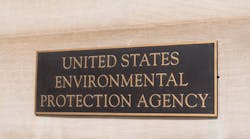A study by Canadian Energy Research Institute, Calgary, suggests that reliance on Canadian reserves to fill the gas demand gap in the US may be misplaced.
"Western Canada�s reserves are not what they used to be. Moreover, new reserves on the Canadian East Coast and elsewhere are not yet developed enough to make up the shortfall in what US gas users expect," the report said.
The author, Len Coad, is vice-president of North American natural gas and electricity for the Canadian Energy Research Institute.
Coad said: �Most forecasts show Canadian gas consumption rising at a steady 1.5% to 3%/year and show exports of Canadian gas rising from approximately 3 tcf a year today to something at or above 4 tcf a year by 2010. In order to meet these requirements, Canadian gas production would need to increase by 3 bcf/day over the 10-year period.
�Although not beyond the realm of possibility, recent supply trends suggest that this is clearly a stretch target for supply. This is particularly true when we consider recent trends in well productivity and decline rates. Although the WCSB [Western Canadian sedimentary basin] resource base is far from depleted, the challenge of increasing production is more significant than in past years.
"Such figures bode ill for those who had looked to Canada for major increases," he said.
Coad cited studies by the Canadian Potential Gas Committee, which tracks production and reserves, that showed discovered gas was 140.9 tcf found in 23,000 fields but estimated that the 122 tcf remaining was spread out among 194,000 fields.
Coad said not only will the fields be smaller, but also their production rate will be lower. �Initial productivity of an average new well in Alberta has declined from roughly 1.5 MMcfd of raw gas for new wells in 1990, to approximately 1 MMcfd in 1998.�
Coad does believe that a more positive attitude toward exploration for Canadian gas will develop, spurred in part by new pipeline capacity. He said some relief from the rapid production decline will come from the certainty of transportation and eventually a market for produced gas.
